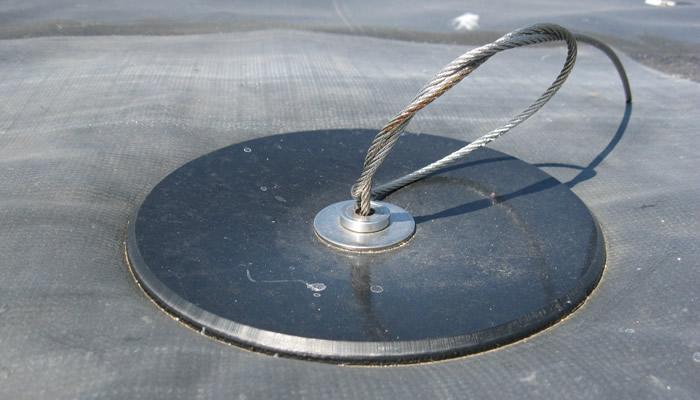A July 15, 2020 post on the SCS Engineers website provided some nicely experienced perspective on why temporary landfill caps are increasingly welcomed on landfill sites. Dr. Ali Khatami, PE referred to capping systems as a “no brainer,” and we agree.
Eight years ago, I drove out to walk a couple landfill caps in the northern Midwest. One site was moving towards final closure and one was focused on an interim, exposed cover.
The exposed cap was what I had driven out to see.
WHAT ARE THE BENEFITS OF TEMPORARY LANDFILL CAPS?
The benefits of a geosynthetic cover for temporary use (which in landfill management can mean many years), operators find many clear benefits, such as vastly lower cap installation costs (vs. soil-related covers), enhanced odor control, no vegetation costs, significantly decreased leachate treatment, etc.
The exposed landfill cap site I walked was undergoing significant work. The operators were expanding capacity, installing new gas head pipe for a waste-to-energy component, and relocating more than 28,000 m3 of waste.
The interim cap system was fascinating, in that it was a trenchless, ballasted cover. The 45-mil EPDM geomembrane was secured with percussion anchors.
MORE GEO: Sustainable Development Goals and Geosynthetics
The operators had only had the cap in use for a year at the time, but they were extremely complimentary of it. The stormwater runoff had been so efficient and clean that they had not endured any additional runoff treatment costs. The clean sheet flow was approved for release. It had been so successful that they had covered an additional cell, currently not in use, with a very temporary supplemental cover while revisiting additional capping strategies and site management options for the future.

What had started out as “Let’s see how this performs” had quickly turned into “We need to do more with this.”
(Khatami’s right. When you witness the benefits, it does become a “no brainer.”)
Preventing infiltration into the waste is one of the most important benefits to temporary landfill caps. Precipitation can be a major source for leachate generation, and the associated treatment can be costly for an operator, especially because the need is highly variable. Controlling infiltration makes controls landfill costs more dependably. Geosynthetic capping systems play their role here.
As Dr. Khatami notes in his column, operators may pay off the investment in a temporary capping system rather quickly (e.g., 3 – 6 years, depending on installation size and unique site factors). That doesn’t just account for what would otherwise be spent on leachate treatment. It also factors in reducing the maintenance associated with erosion on slopes, vegetation issues, and other common problems when sites are not yet capped.
CAP TAKEAWAYS
One of the advantages of an exposed geosynthetic cover on a landfill is that a business already exists for evaluating and pricing in whether to replace a waste cell cover system and how a facility might be mined in the future. Material might be recycled, space might be gained, and new waste might even be added before a true final cover is in place.
The exposed interim cap that I walked in 2012 included two sections, which totaled more than 46,000 m2 of space, was part of that long-term view for the site. What would be the needs of their waste management operations in 10 years? 20 years? They were going to be prepared because of the strategy they were following.
They also used the answer to their capping questions as a way to reduce cost and waste with the exposed cap installation. More than 3,000 m of ballast trench was able to be replaced by using a network of roughly 1,000 percussion anchors. And the 45-mil EPDM geomembrane cover was designed with 20+ years of exposed service life, which gave the operators significant site flexibility.
That, utlimately, is the point of engineered temporary landfill caps. They deliver value quickly, remove some stability threats (e.g., erosion), reduce maintenance needs, and give operators flexibility so that they can adjust to the changing needs of waste streams.
Check out Dr. Khatami’s column at the SCS Engineers website.
Have a project or engineering perspective to share with the design community? Contact us.
Chris Kelsey is the Senior Editor and Content Director for Geosynthetica and the host of the GeoTalk podcast. Connect with him on LinkedIn. Follow Geosynthetica on LinkedIn and Twitter.












